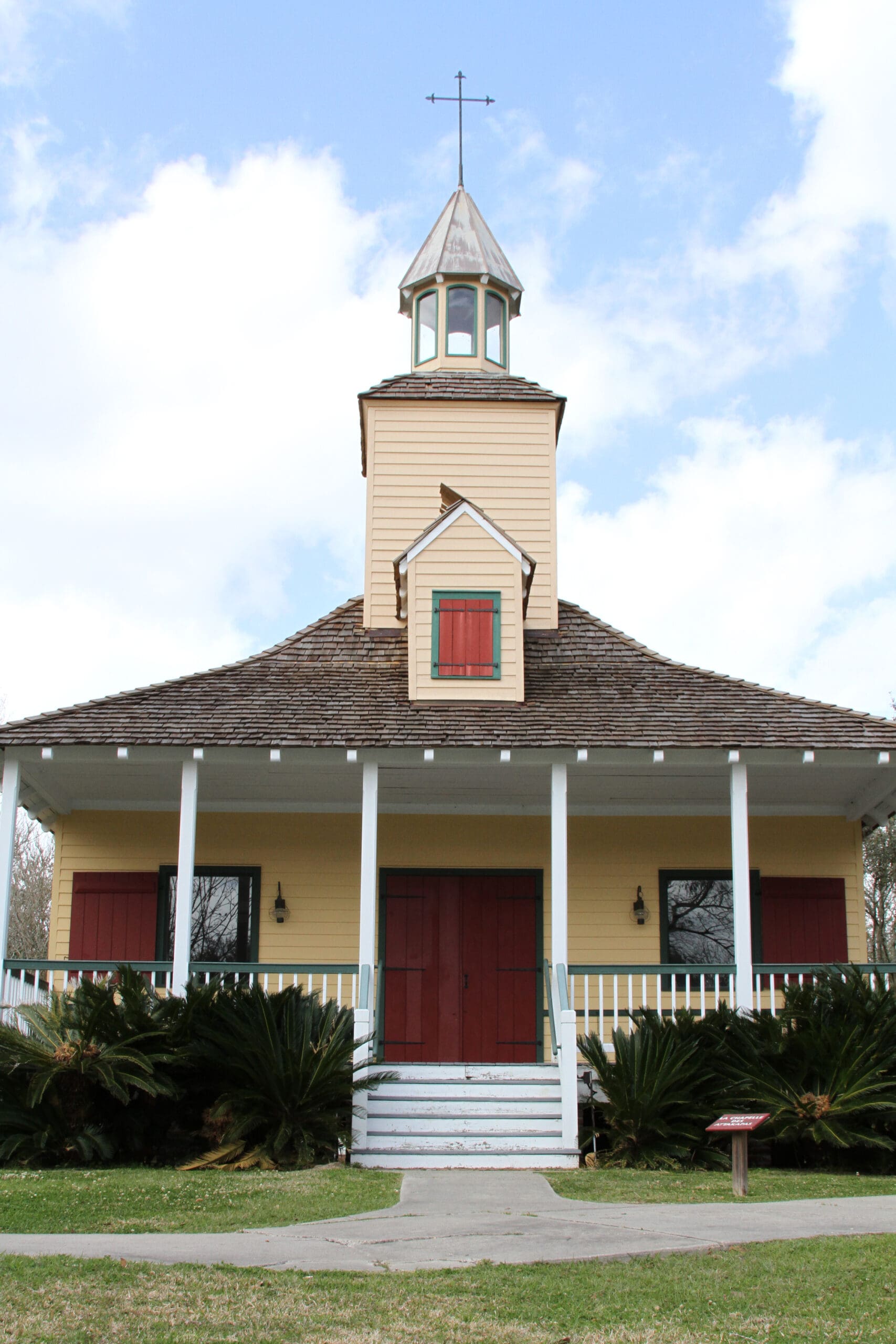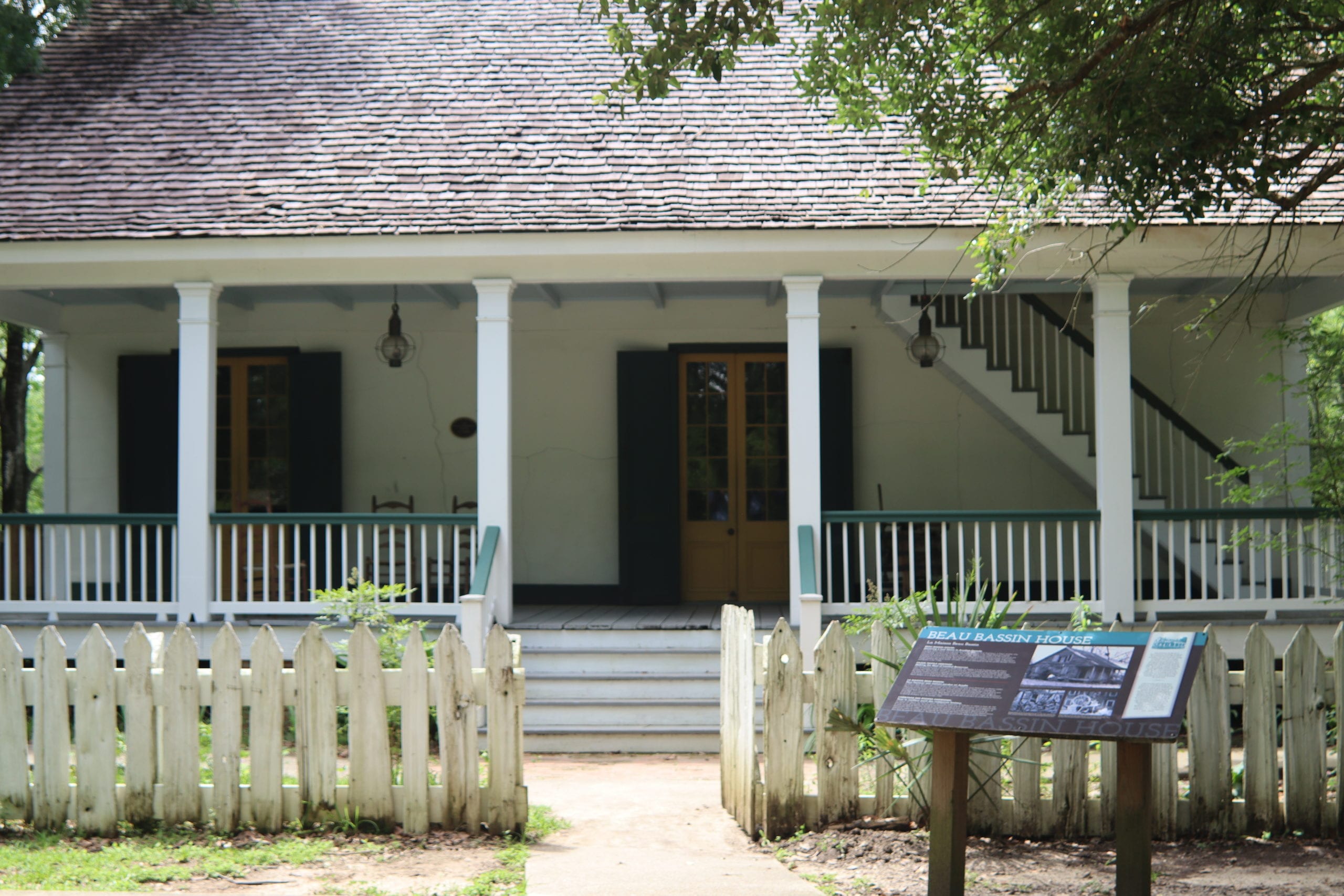HISTORIC HOMES
The Vermilionville Living History Museum and Folklife Park is one of the world’s largest physical representations of an early Acadian settlement using original structures dating from 1765 to 1890.
You will be transported back in time with our historic park’s attractions, including seven restored original homes sitting on a 23-acre site housing local artisans demonstrating a variety of essential crafts performed by the early settlers.
Events Calendar

LA CHAPELLE DES ATTAKAPAS
Vermilionville’s chapel is a reproduction of the style based on the Catholic churches at Pointe Coupée (1760) and St. Martinville (1773). Catholicism was the only legal religion in Louisiana before the Louisiana Purchase in 1803. Since the Roman Catholic Acadians loved their religion and the priests visited infrequently, the Acadians celebrated la messe blanche (a prayer service conducted by laymen). Slaves practiced the religion of their masters. Free men of color enjoyed social prestige, were economically independent, engaged in many trades, and worshipped in the same churches used by whites. Slaves sat in small pews on the side aisles. Rosary making is sometimes demonstrated here. The rosaries are made of seeds of the coix lacryma jobi plant, known as Job’s Tears. You can see a Job’s Tears plant outside the chapel in Le Parterre garden.
BEAU BASSIN
Circa 1840, Beau Bassin was built of colombage and bousillage with a blend of Creole and American Greek Revival styles. Spinning, weaving, quilting, and textile crafts are demonstrated in Beau Bassin, and on display is a 150-year-old Acadian loom. In Canada, Acadian women wove wool and flax, and in this new land, they learned to weave cotton.


MAISON MOUTON
La Maison Mouton is a reconstruction of an 1810 house, a basic Acadian house with a detached kitchen. There were no glass windows, only shutters locked securely against weather and possible intruders. La galerie (the porch) served as an extra room in good weather and a place for social activities. The cabinet making and other woodworking skills demonstrated here were essential tasks for the Acadian man. Cypress, oak, and walnut woods were available. The Acadians arrived from Canada with no tools, but the Spanish government provided tools and new ones were fashioned as needed by the blacksmith.

